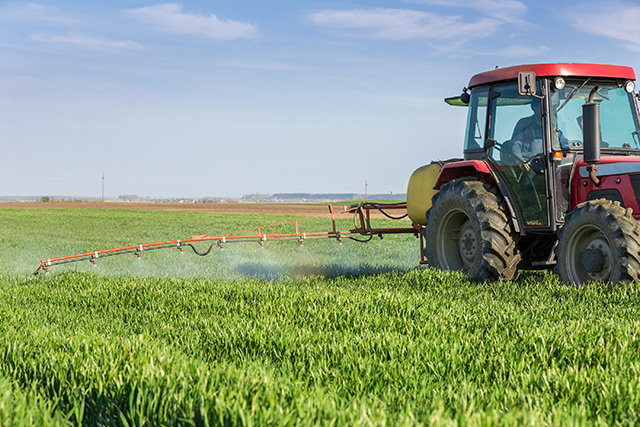Fenhexamid – toxicity, side effects, diseases and environmental impacts
12/02/2017 / By Earl Garcia

Fenhexamid is categorized as a synthetic folial fungicide that belongs to the hydroxyanilide substance group. It is first introduced and marketed in 1998 to control Botrytis spp. and various other plant pathogens such as Monilinia spp. and Sclerotinia spp. According to the Agro Pages website, the hazardous chemical is applied to a wide array of fruits, vegetables and ornamental plants including:
- berries
- citrus fruits
- eggplants
- Japanese ornamentals
- plums
- pistachios and almonds
- stone fruits
- tomatoes
- cucumbers
- vegetables

List of known side effects
An entry posted on the In Chem website reveals that fenhexamid exposure may result in adverse body system toxicities. According to the article, direct contact may lead to apathy, labored breathing and spastic gait as well as piloerection and reduced motility, temporary convulsions and vocalization following direct chemical contact. Likewise, fenhexamid poisoning is associated with massive gastrointestinal ulceration and black discoloration of the abdominal organs. Various animal studies have shown that the synthetic fungicide may also induce severe eye and skin irritations.
An article published on the Pub Chem website has also revealed that the toxic fungicide may contaminate both soil and water sources, and negatively affect aquatic ecosystems and animals including several species of fish, invertebrates and crustaceans. The hazardous chemical is also detrimental to aquatic plants, algae and sediment residing organisms. Likewise, fenhexamid is recognized as highly toxic to both birds and mammals as well as other beneficial organisms such as honeybees and earthworms.
Body systems affected by fenhexamid
Fenhexamid is notoriously detrimental to the respiratory system’s overall health. Likewise, the toxic compound is known to affect the digestive tract, the muscular system and the central nervous system. The fungicide is also shown to negatively affect both eye and skin health.
Items that can contain fenhexamid
An entry posted on the Pesticide Properties DataBase website reveals that many commercially available fungicides – such as Teldor, Decree, Elevate and Fenhexamid 500 WG – contain fenhexamid as a primary chemical component. The harmful substance is sold in various formulations including suspension concentrates, water dispersible granules and wettable powders. The toxic fungicide is currently available in many parts of Europe, Australia and the U.S.
How to avoid fenhexamid
A material safety data sheet issued by Arysta LifeScience suggests wearing protective clothing, gloves, and respiratory equipment to reduce the risk of fenhexamid exposure. The data sheet also advises that workplaces install adequate ventilation to lower the odds of exposure. The safety guidelines stress that people exposed to the toxic fungicide should contact a poison control center or seek immediate medical help.
The data sheet has also recommended that people who inhaled toxic fumes be taken to an area with fresh air, while those who had direct eye and skin contact should wash the affected areas with plenty of water. Furthermore, the safety guidelines recommend that people immediately evacuate the area to avoid direct contact if an accidental spill occurs.
Where to learn more
- Overused fungicides give rise to deadly, resistant fungus threatening humans and crops
- Exposure to common fungicide causes neurological problems across four generations
- Fungicide chemicals found to produce autism-like symptoms in animal studies, causing inflammation of the nervous system
- Chemically induced autism? Scientist discovers pesticides, fungicides lead to neurodegeneration in test subjects
- AUTONOMOUS PLANES now weaponized as pesticide delivery platforms to inundate farmland with toxic chemicals
- Jury finds DuPont guilty of dumping cancer-causing Teflon chemicals into Ohio River that spread across the globe, causing widespread illness and death
Summary
Fenhexamid exposure raises the odds of developing apathy, labored breathing and spastic gait.
Fenhexamid causes piloerection and reduced motility, temporary convulsions and post-exposure vocalizations.
Fenhexamid triggers gastrointestinal ulceration, abdominal organ discoloration and severe eye and skin irritation.
Fenhexamid is notoriously detrimental to both the respiratory and central nervous systems.
Fenhexamid negatively affects the digestive tract, the muscles and the skin and eyes.
Sources include:
Tagged Under:



















